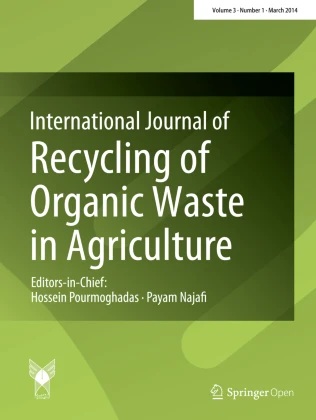Guar, jantar, wheat straw, and rice hull composts as replacements for peat in muskmelon transplant production
- Department of Plant Sciences, McGill University, Sainte-Anne-de-Bellevue, Canada
- Department of Soil Science, Faculty of Agricultural Sciences and Technology, Bahauddin Zakariya University, Multan, Pakistan
- Department of Horticulture, Faculty of Agricultural Sciences and Technology, Bahauddin Zakariya University, Multan, Pakistan
- Institute of Environmental Sciences and Engineering, School of Civil and Environmental Engineering, National University of Sciences and Technology (NUST), Islamabad, Pakistan

Received: 2016-07-04
Accepted: 2016-10-15
Published in Issue 2016-10-26

This work is licensed under a Creative Commons Attribution 4.0 International License.
How to Cite
HTML views: 2
PDF views: 0
Abstract
PurposeThe demand for soilless media for vegetable transplant production is increasing. Economic constraints paired with concerns over the sustainability of peat mining have necessitated the replacement of peat with renewable and regionally abundant alternatives. The aim of this study was to develop from composts complete or partial substitutes for peat.
MethodsComposted guar (Cyamopsis tetragonoloba), jantar (Sesbania aculeata), wheat (Triticum aestivum) straw, and rice (Oryza sativa) hulls adjusted to 10% air-filled porosity (AFP) were blended on a volumetric basis with peat moss at discrete levels (0–50%). Total water-holding capacity, shrinkage, dry and wet bulk density, pH, electrical conductivity, N, P, K, FE, B, and Zn concentrations of each compost, their blends, and a peat control were measured. The experimental media were used to grow muskmelon (Cucumis melo) plants in a greenhouse. Seed germination, shoot fresh weight, shoot height, leaf area, stem diameter, root length, and mineral nutrient concentrations of transplants were quantified. After transplanting in the field, the growth rates and yields were measured. Nonparametric regression was used to analyze the data.
ResultsThe physiochemical parameters measured for most of the experimental media fell within the recommended range for growing media; however, pH for all media exceeded the recommended range. Media-containing guar and jantar composts generally contained more nutrients than media-containing rice hull or wheat straw composts. Fresh weight, height, and root length were generally greater for seedlings grown in media-containing rice hull compost than for those grown in media-containing other composts. Seedlings grown in media-containing guar or jantar composts generally had greater tissue nutrient concentrations.
ConclusionsAll blends produced acceptable seedlings; however, the largest seedlings, and greatest post-transplant growth rate and yield were produced in media containing 30–50% rice hull compost.
Keywords
- Compost. Peat moss. Potting media. Muskmelon. Cucumis melo,

 10.1007/s40093-016-0142-6
10.1007/s40093-016-0142-6











